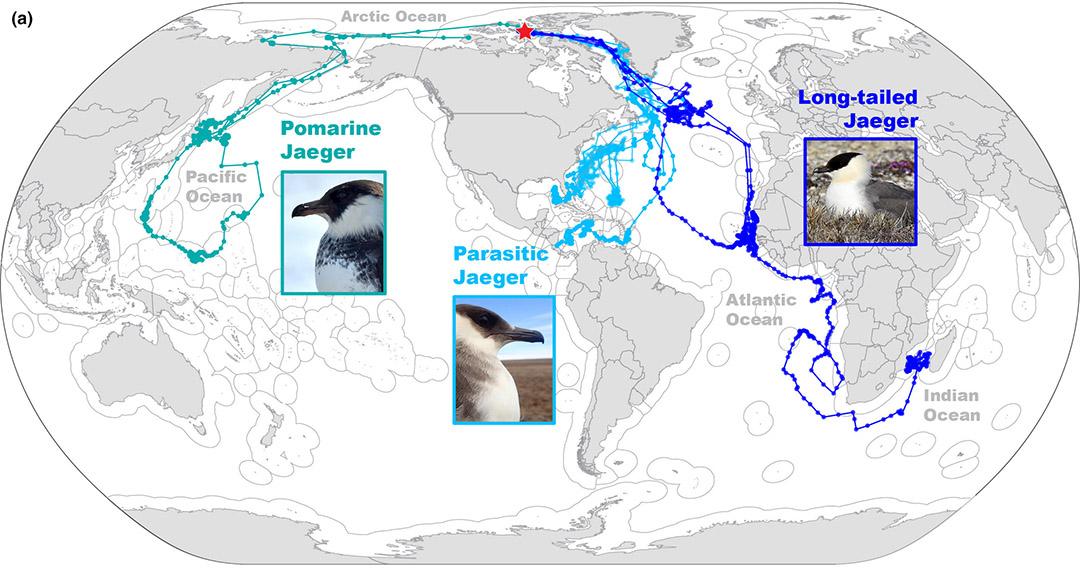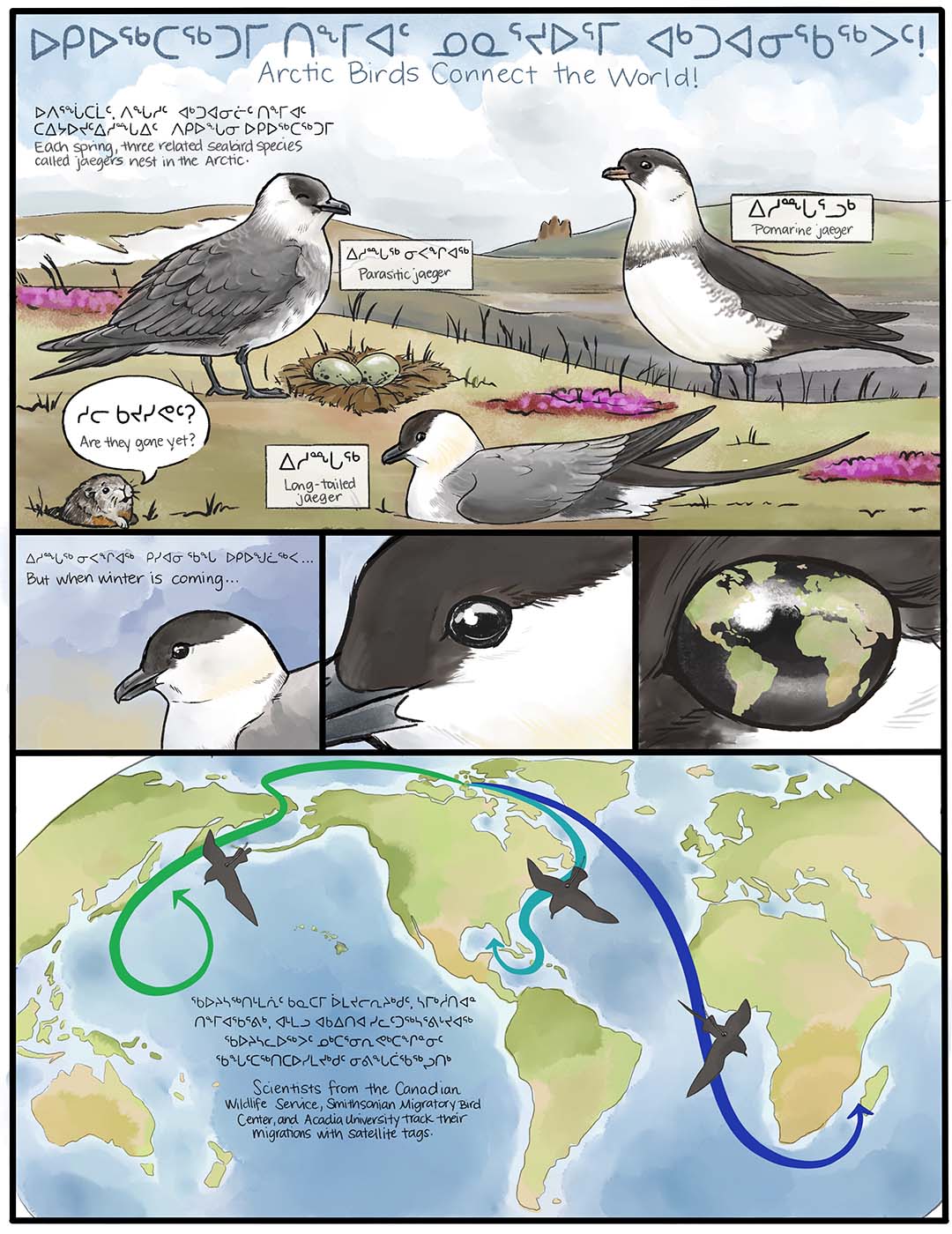
Three Arctic jaeger species – the pomarine jaeger, parasitic jaeger and long-tailed jaeger – share the same breeding area in the Canadian High Arctic. But where do they spend the winter? A team of scientists from the Smithsonian Conservation Biology Institute, the Canadian Wildlife Service and the Acadia University investigated this question by tracking the migration routes of several individual jaegers. They discovered that the three related species disperse from their common breeding site across four different oceans during the winter.
Knowledge of the birds’ locations outside the breeding season is critical to international conservation efforts. Conditions in the Arctic and the oceans are changing so rapidly due to climate change that these changes may impact the birds that migrate from the Arctic to the high seas and back each year. For the jaegers, the three smallest species of the genus Stercorarius, the researchers were able to close some knowledge gaps in their study, which was published in the journal Ecology and Evolution, with the help of satellite transmitters.

The research team equipped a total of seven birds with telemetry transmitters on Bathurst Island, Nunavut in the Canadian High Arctic, which then took completely different directions from their common breeding site. While the pomarine jaeger (Stercorarius pomarinus) flew into the western Pacific after crossing the Arctic ocean, the parasitic jaegers (Stercorarius parasiticus) and the long-tailed jaegers (Stercorarius longicaudus) migrated into the North-Atlantic, the latter even continuing into the Indian Ocean to the region between East Africa and Madagascar.
“These three related seabird species left their shared summer island home in the Canadian Arctic to take wildly different migration routes across four of the world’s oceans. Anyone that’s ever taken a different route than the rest of their family can relate to this amazing migration story. In this golden age of animal tracking, birds still have the ability to surprise us.”
Autumn-Lynn Harrison, lead author and research ecologist for the Smithsonian Conservation Biology Institute’s Migratory Bird Center
Jaegers are an important component of marine and terrestrial food webs. They partly catch their prey themselves (fish, lemmings, voles and other), but also steal other seabirds’ prey, what is called kleptoparasitism. In the breeding areas, the long-tailed jaeger and the pomarine jaeger depend on healthy populations of lemmings and other small rodents. As these in turn depend on good snow conditions in autumn and winter, these two jaeger species are particularly threatened by climate change.
According to the authors, the new data provide further evidence of the link between marine biodiversity in the Arctic and the high seas. They hope that their findings will be considered in the ongoing negotiations on an internationally binding legal instrument for the conservation and sustainable use of marine biodiversity in areas beyond national jurisdiction.
The expansive migrations of jaegers also link local coastal communities from the Arctic to the tropics. To help residents of the communities understand the life histories of the three seabird species, the study authors partnered with artist Laurel Mundy to create a comic version of the research, according to Smithsonian’s National Zoo & Conservation Biology Institute website. The comic is available online in five languages, including Inuktitut and English, and can be downloaded from the website.
Julia Hager, PolarJournal
Link to artist Laurel Mundy: http://www.laurelmundy.com/
More on the subject:








